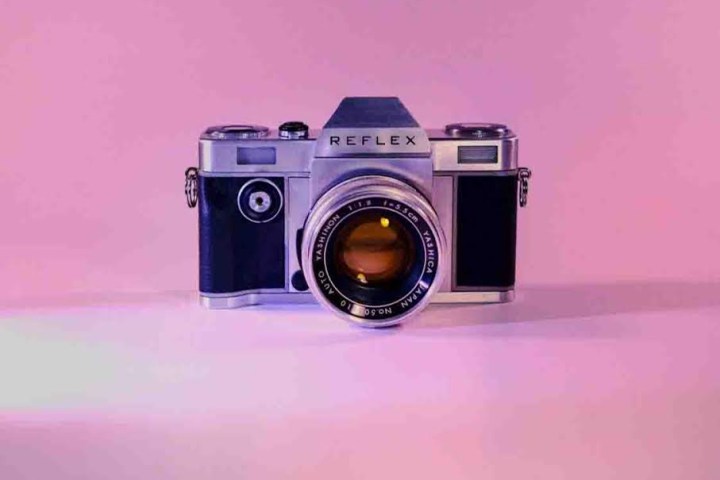
Reflex, designed by a London startup of the same name, is the first manual film SLR developed after the millennium and aims to keep the classics that are driving photographers back to film while adding features in line with current tech. If the Kickstarter campaign reaches its stretch goal, the Reflex camera will also be paired with a Reflex app. No, you can’t send film photos to a smartphone, but you can record your shot settings. The app will record the settings used for each shot, so photographers can easily remember favorite settings, or, if scanning in those film shots, add the information into the metadata.
The Reflex camera is also capitalizing on the modern concept of a modular system, with adaptions to both the front and the back of the camera. The camera ships with a standard M42 mount, but interchangeable lens mount plates mean that photographers can use vintage lenses from a number of different manufacturers, including Nikon, Canon, Olympus, and Pentax.
The modular idea continues at the back of the camera, where interchangeable backs makes it possible to have several rolls of film available at once. All the backs are the 35mm format, but the design allows photographers to swap film in broad daylight without wrecking the film by already having the film loaded into a second back.
Along with having a more traditional built-in flash, the Reflex will also be equipped with an LED light that allows photographers to use an on-camera continuous light source, adjustable with three different settings. An LED screen will also serve as the camera’s metering system. Of course, those built-in features need power, and the Reflex will use the modern convenience of a rechargeable lithium-ion battery.
If the modular backs and swappable lens mounts aren’t enough, Reflex plans to make additional accessories available through open-source 3D printing files, allowing users to further expand the camera’s capabilities.
While the Reflex incorporates a number of modern conveniences, the camera keeps a number of the characteristics of classic film SLRs, including a shutter speed and ISO dial at the top of the camera. Focusing is manual and so is exposure, with full manual or aperture priority available. And as a nod to the metallic construction of the vintage cameras inspiring the Reflex, the camera will be constructed from magnesium alloy, not plastic.
While the Reflex is the first manual 35mm created in the last 25 years, the film trend has sparked a number of new film cameras. Polaroid is back with a OneStep camera with instant film after a company that refurbishes old cameras became a majority shareholder, I’m Back switches film cameras to digital ones, and Yashica is working to launch a film-inspired digital camera with interchangeable “digifilm.”
Reflex is taking to Kickstarter to fund the production of the camera with a goal of about $130,000 and a prototype already finished — and after just the first day, they’re already 75 percent of the way there. The Kickstarter remains open until December 7. If the funding and production are successful, Reflex plans to ship out the cameras in August 2018. Early backers can potentially pick up the camera for pledges starting at about $458.




